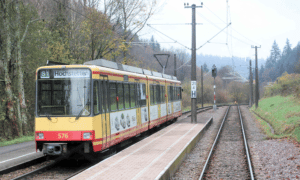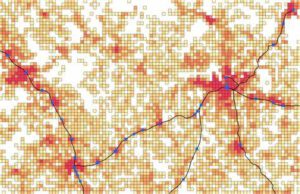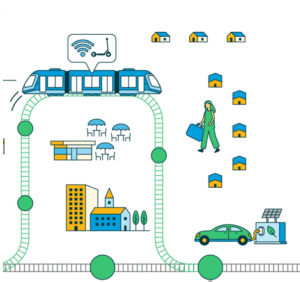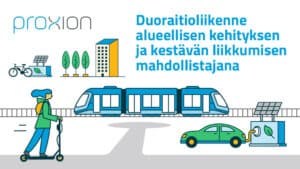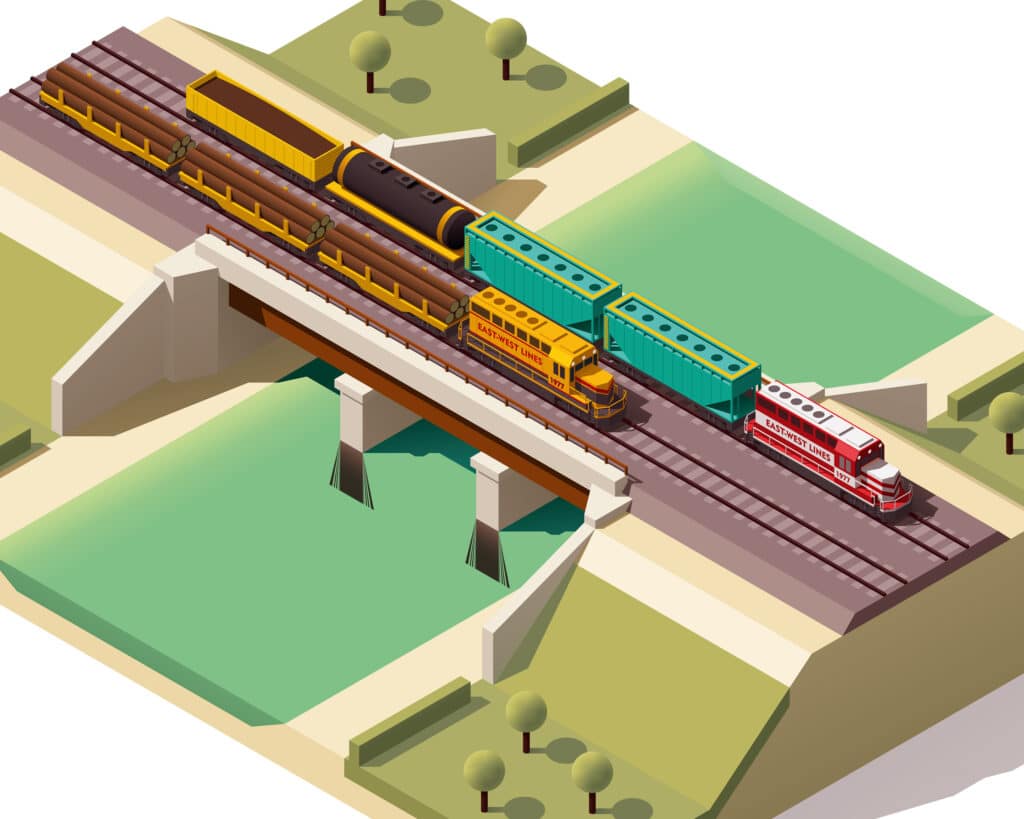
Tram-train traffic
The principle of tram-train traffic is to connect a tramway and a railway. The same equipment is used in the city or municipality center on a tramway and outside the city center on a public transport railway. The solution creates direct connections without train changes between the sub-regions and the city center, as the tram-train is able to utilize the existing infrastructure and capacity.
Hankkeen tiedot
Kokemukset raitiojunaliikenteestä ovat osoittaneet, että ne ovat nostaneet julkisen liikenteen käyttöastetta kymmenillä prosenteilla. Duoraitioliikenteen verkon selkeys innostaa käyttämään julkista liikennettä verrattuna vaikeammin omaksuttavaan bussilinjastoon.
Katriina Pietilä, Liikennesuunnittelun tiimipäällikkö
Technology
The track gauge of the Finnish rail network is 1524 mm, which would be selected in Finland as the track gauge of the tram-train. In principle, tram-trains are two-system wagons that use 750 V DC in the urban area and 25 kV AC on the railway.
The equipment can be powered by electricity, gas, battery or diesel. It is also possible to implement combinations of different propulsion options, in which case it is a hybrid. Today, several European cities already use trams, which run alongside overhead power lines for part of the journey on batteries, for example in Nice. As battery technology evolves, similar hybrid solutions are likely to become more common, as their benefits, especially in urban environments, are aesthetics and safety when no overhead contact lines are needed.
The development of battery-powered rolling stock is currently rapid. For example, in 2020, local train equipment has already been ordered in Germany, which can run 80 km on battery power in addition to normal electricity use.
The top speed of the tram-train on the railway is 100 km/h. On railways, the tram-train stock must also be equipped with a train access control system and other railway traffic equipment. In the urban area, traffic takes place in the same way as urban trams. So the tram-train is fast and safe.
The tram-train is similar in size to a conventional European tram (37 m long and 2.65 m wide), so it even moves agilely in an urban structure with a small curve radius capability. Externally, the tram-train is little different from a regular tram. Due to longer distances, more attention has been paid to travel comfort.
Duoraitiovaunu rataverkolla Saksassa
Population density ratio to train track (black line) and to railway stations (blue squares) (National Land Survey of Finland)
In Finland, railways already run through several city centers, and housing and workplaces are often strongly concentrated along the tracks or in the vicinity of railway traffic crossings. Thus, much of the infrastructure for tram-train traffic already exists. The same track gauge of the railway track and the tram-train railway
allows tram and commuter train projects to be considered as one entity rather than competing or foreclosing each other. In addition to the city centers, the tram-train’s area of influence extends far into the surrounding municipalities, in the same way as regional public transport. Due to its operating principle, the tram-train serves a much larger population than the traditional tramway.
When planning zoning, it is also good to consider the current climate goals and the ways to achieve them. How will the cost of private cars come about in the future and should this already now be taken into account in zoning by shifting its focus from the motorways closer to the railways, while also condensing the city centers?
Tram-train traffic surveys are based on the utilization and expansion possibilities of the existing railway network. The surveys examine the region’s suitability for tram-train traffic, take into account regional specific needs and future visions that tram-train traffic would support. The transport system is considered as a whole. The comprehensive survey highlights different options for implementation with cost estimates, and a step-by-step plan can be developed on how to start and how to expand at a later stage to support the growth and needs of the region.
Effects
The electric and battery-powered tram-train is a locally emission-free and quiet means of transport. Low-floor tram-trains are barrier-free, so they offer equal mobility for all population and age groups.
Experience with tram-train transport has shown that they have increased the utilization rate of public transport by tens of percent. The clarity of the tram-train network inspires the use of public transport compared to the more difficult to adopt bus line. Perceptions of tram cities are also positive, which has attracted new residents, businesses and investment. The environments of rail stops are sought-after residential and commercial locations, as a result of which the value of land has increased.
The tram-train offers people an easy and direct connection between the regions and the city centers, which enlivens the centers and their services. Efficient public transport reduces congestion and frees up parking space, allowing the tram-train to be taken even closer to pedestrian centers. An easy-to-use, smooth and safe regional public transport system will also reduce dependence on passenger cars outside major urban centers and make non-urban areas more vibrant.
Most of the costs of the tram-train are investments in a long lifecycle, unlike in bus transport, where operating costs make up the majority of the costs. The tram-train is a long-term investment, as it has a service life of at least 40 years and most of the tram infrastructure is also long-lasting. The service life of a city or regional bus, on the other hand, is usually a maximum of ten years.
In any case, due to climate goals and the strong development of battery technology, investment in public transport equipment will be needed in the near future. Now is a good time to think about the possibilities of different options. Rail transport is supported by, among other things, its environmental friendliness, passenger capacity, travel comfort, safety, and the possibility of speeding up the accessibility of downtown areas by using railway sections as one option. The investment in the tram-train is a long-term investment in a more efficient infrastructure for the city and the entire region.

